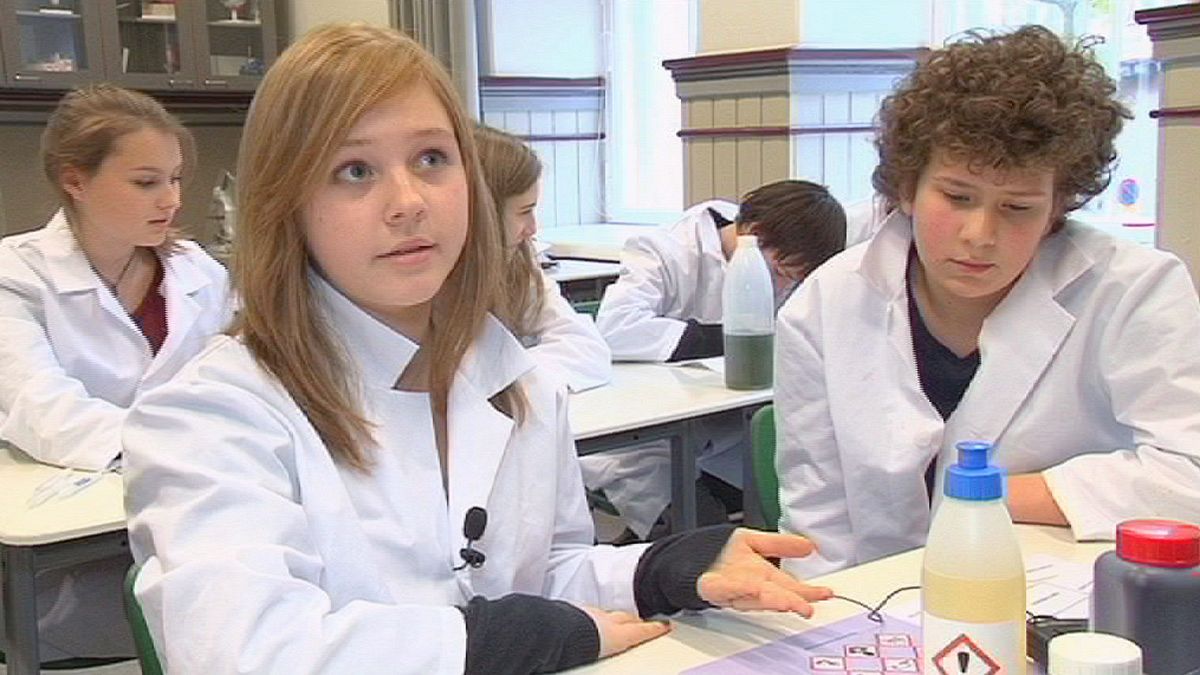Chemistry both mystifies and fascinates students. In the International Year of Chemistry, people are looking at new, creative ways of teaching it.
The European Chemicals Agency is based in Helsinki, and close by is a school which caters for the children of those working at the agency. Among the lessons, learning to recognise the new chemical hazard symbols using a recognition game.
The school was founded in 2008 and has 220 pupils in three language sections: English, French and Finnish. The parents of more than half of the pupils work at ECHA. Doing experiments is one way to learn, and another is by watching videos.
For another view on teaching science we went to France.
The name Marie Curie looms large over the world of chemistry. The 84-year-old nuclear physicist Hélène Langevin Joliot is the grand-daughter of Pierre and Marie Curie.
From her grandparents’ house just south of Paris she said science has lost track of what is essential: “There is a real problem. Obviously teaching today has developed a lot compared to what it was 50 years ago, or in Marie Curie’s time. But we have to accept that despite that, the dominant attitude to science among the wider public is ‘I don’t understand science’ so there really is a problem with science teaching. And going back to the ideas of Marie Curie, you really have to think about the approach she developed where actually she said you can’t learn science from a book, you can only learn it by experiencing it.”
Hélène Langevin Joliot beleives that science should be open to everyone and like her grandmother, she feels that science and humanism should go hand in hand: “Fundamentally, science discovers new facts, new ideas; it doesn’t dictate the use of them, so people — even non-scientists — should have their say about what we use science for. If we just let anyone do anything, whether or not the wider public approves of it, well that’s where science and humanism diverge.”
With 2011 being marked as the International Year of Chemistry, Helene Langevin-Joliot says it has partly achieved its goal: “The general public, very often they are afraid of chemistry. Of course chemistry is all around us in nature – in fact chemically speaking there’s no difference between a natural and an artificial product. We need to make people aware of this reality rather than believing that there’s some sort of magic there. And this International Year of CHemistry has partly achieved that.”
The Hong Kong University is playing its part in promoting chemistry. In Hong Kong, they have been running a series of tours and workshops to demonstrate the importance of chemistry in our daily lives. If you look closley enough, it’s possible to see that chemical composition determines shape, colour and other properties of all materials, whether they are masonary bricks or diamonds.
The Rocks, Minerals and Gems Tour also included a visit to the Stephen Hui Geological Museum.
And of course, chemistry has been used for years to help solve crimes. So the chemistry department organized a Crime Scene Investigation with university students as the forensics experts. The 30 students here analyzed all the potential evidence to help uncover the murderer. Chemical analysis is important but so is proper detailed documentation.
The analysis of every clue is important. Not only in solving crimes but also in discovering more about the world we live in.
